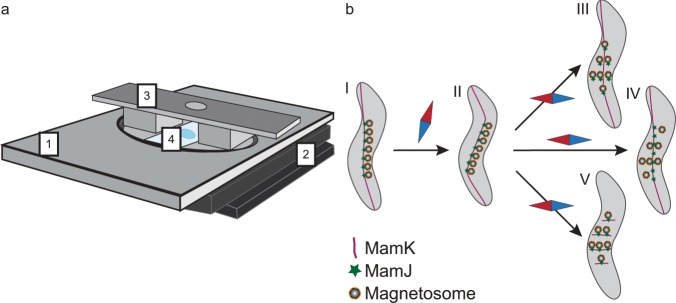Figure 3.
Setup and possible effects of rotating a magnetic field around a bacterium. (a) An aluminum plate (1) is placed on top of the stage of an inverted microscope (2) without contact. The magnet (3) can be freely rotated around the sample (4). (b) Possible scenarios of MamJ-MamK interaction caused by the external magnetic field. (I) Living bacteria are immobilized and aligned with an external magnetic field in an agarose matrix. (II) The magnetosome chain can initially follow the rotating field, up to a given threshold, where three possible effects are envisaged: (III) MamJ detaches from the filament so that MamJ and MamK are separated. A decreased FRET efficiency and an intact filament are expected. (IV) Alternatively, the magnetosomes are detached from the MamK filament, but MamJ and MamK are still connected. A high FRET efficiency similar to the starting case (I) and an intact MamK filament are expected. (V) Finally, the filament ruptures, but MamJ and MamK are still connected. An unaltered high FRET efficiency is assumed, but filament fragments are expected in STED images.

